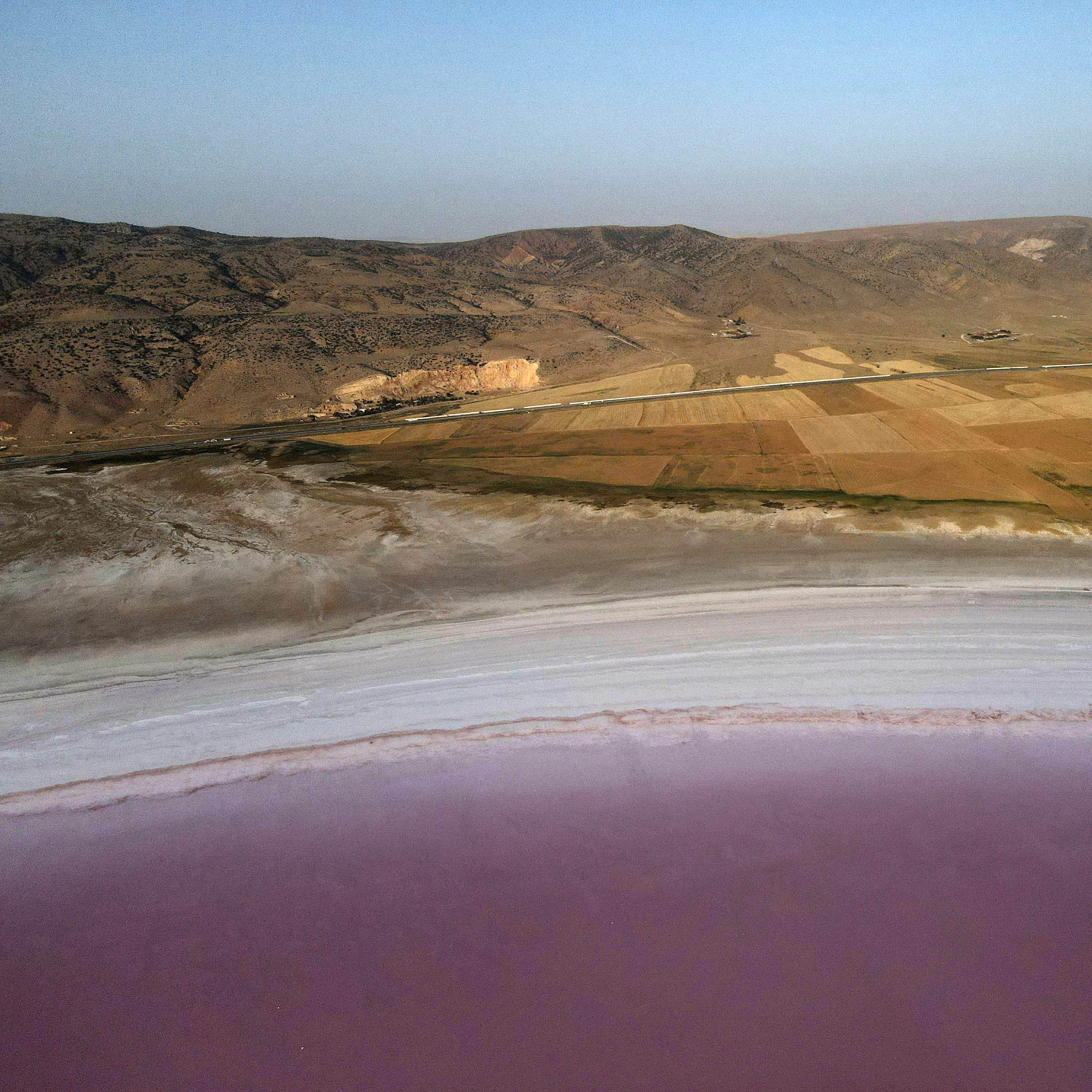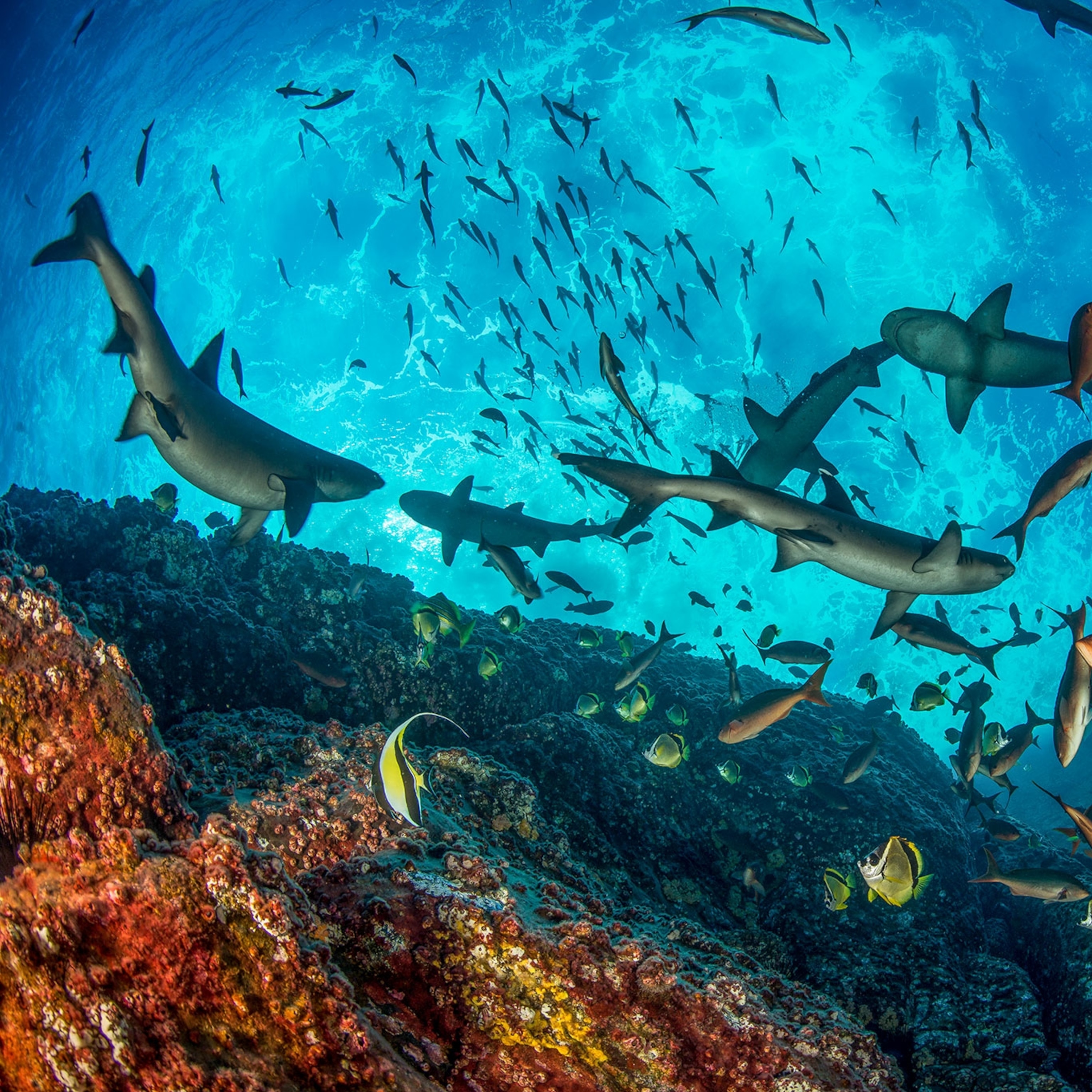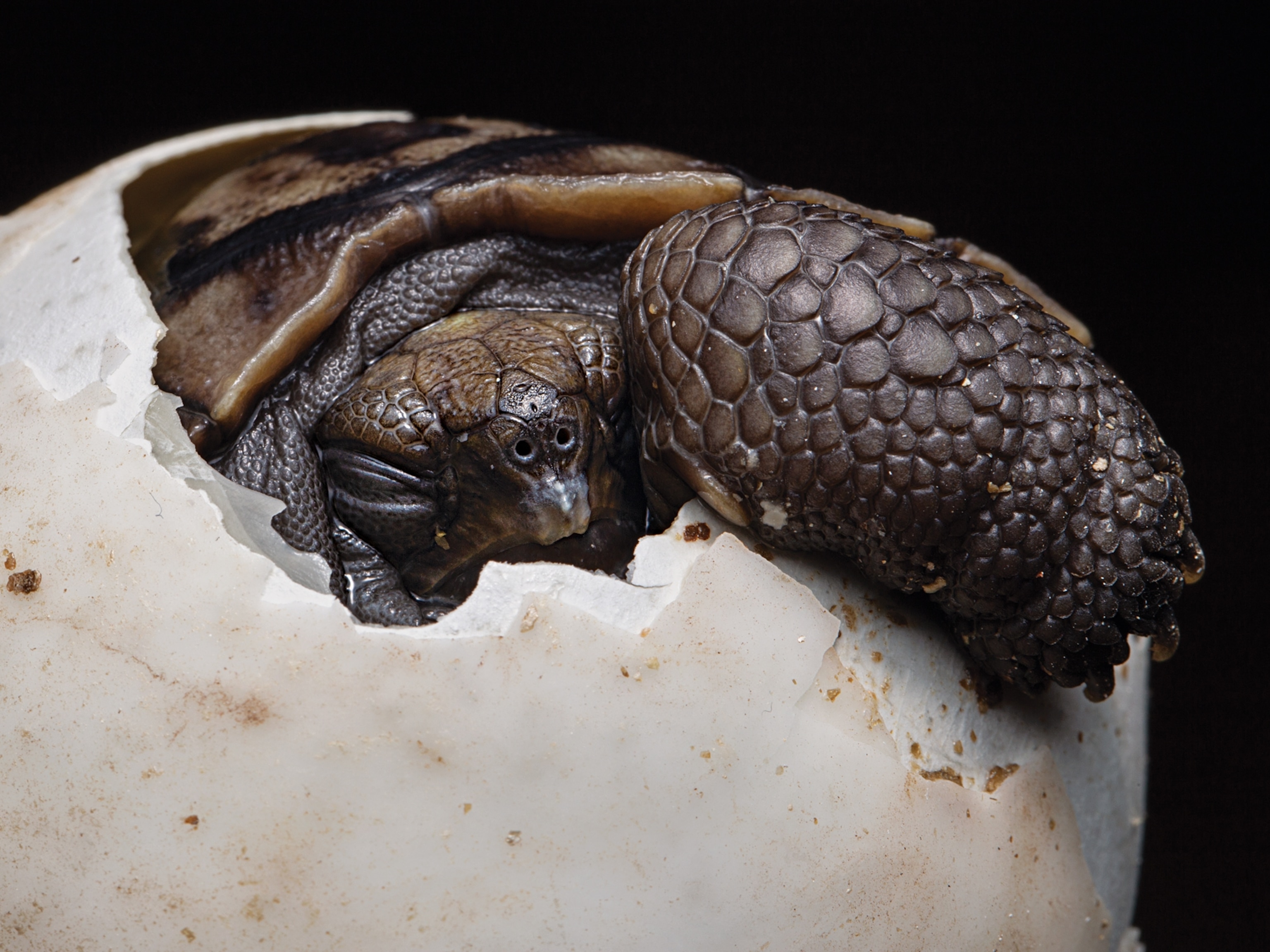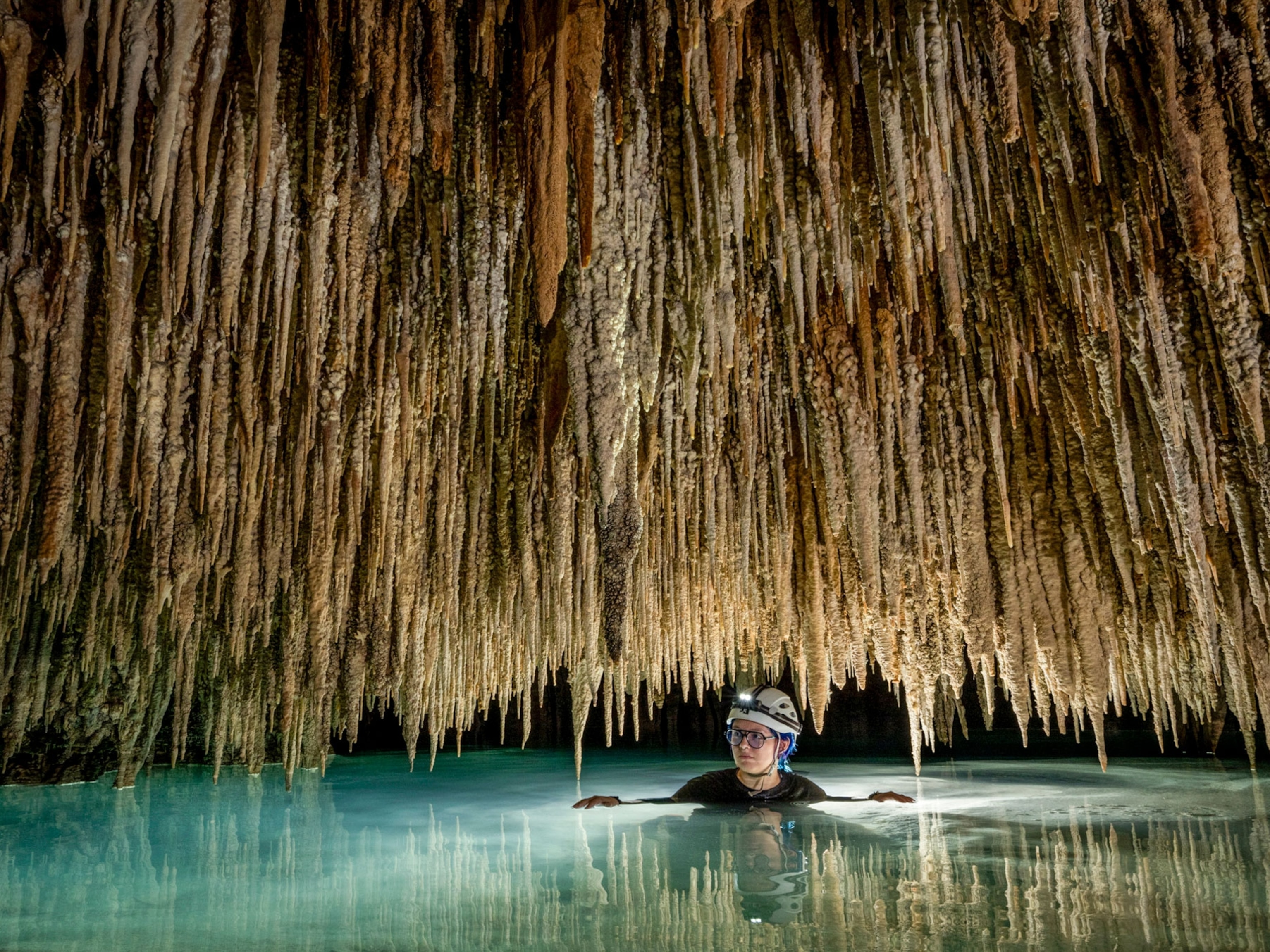
In a warming climate, we need to radically rethink how we conserve nature
Parks and refuges aren't enough to preserve America’s environment. Land, water, and wildlife need to be protected everywhere.
Conservation works. In the past century or so, efforts to save American species like the peregrine falcon, the American bison, and the Pacific gray whale have succeeded. But last year, the federal government proposed taking 23 species of plants and animals off the endangered species list—not because they’ve recovered, but because they’re now extinct. We have to do better.
My friend Karl Wenner shows up to meet me wearing scrubs with a canvas jacket thrown on top. He’s a retired surgeon, but he still spends a few hours a month teaching. He also co-owns Lakeside Farms in the Klamath Basin, a dry part of southern Oregon that has lost nearly all its wetlands. Without marshes, water runs into Upper Klamath Lake unfiltered and carrying phosphorus-rich volcanic soil, causing algal blooms that harm two federally listed sucker species found nowhere else on Earth. Every summer for decades now, nearly all the juvenile fish have died, leaving an aging population.

Wenner’s farm floods its fields in the winter, both to kill weeds and to create waterfowl habitat. In the past, I’ve come by to see huge flocks of ducks and swans coasting in to spend the night. We’d post up on a dike with binoculars and watch great vortices of waterfowl swirl down onto the water. His passion for birds is infectious.
But when the water was pumped off in the spring, it was so full of phosphorus that it counted as pollution. So this year, with about $350,000 from the U.S. government, Wenner and his co-owners created permanent wetlands on 70 of their 400 acres. The tangle of wetland plants will capture phosphorus-laden sediment before the farm’s irrigation water is returned to the lake. In addition, it’s year-round habitat for plants, birds, and—soon—baby suckers. “You can’t go back to before Europeans came to the basin,” he says, “but you can make it rhyme.” Despite his enthusiasm, Wenner tells me he can’t sacrifice profit to carve out this space for wildlife. “It has to pencil out,” he says.
His new wetland is a perfect rectangle, bordered by reeds and willows, with a partially submerged dike—a dotted line of islands for geese to nest on. As we drive alongside, Wenner tells me about the wildlife he’s seen in the new marsh, including lots of ducks: buffleheads, scaup, shovelers, canvasbacks, mallards. He spots a flash of color in the reeds. “Oh! The first yellow-headed blackbirds of the year!”
(Your garden can benefit from rewilding—here's how you can get started.)
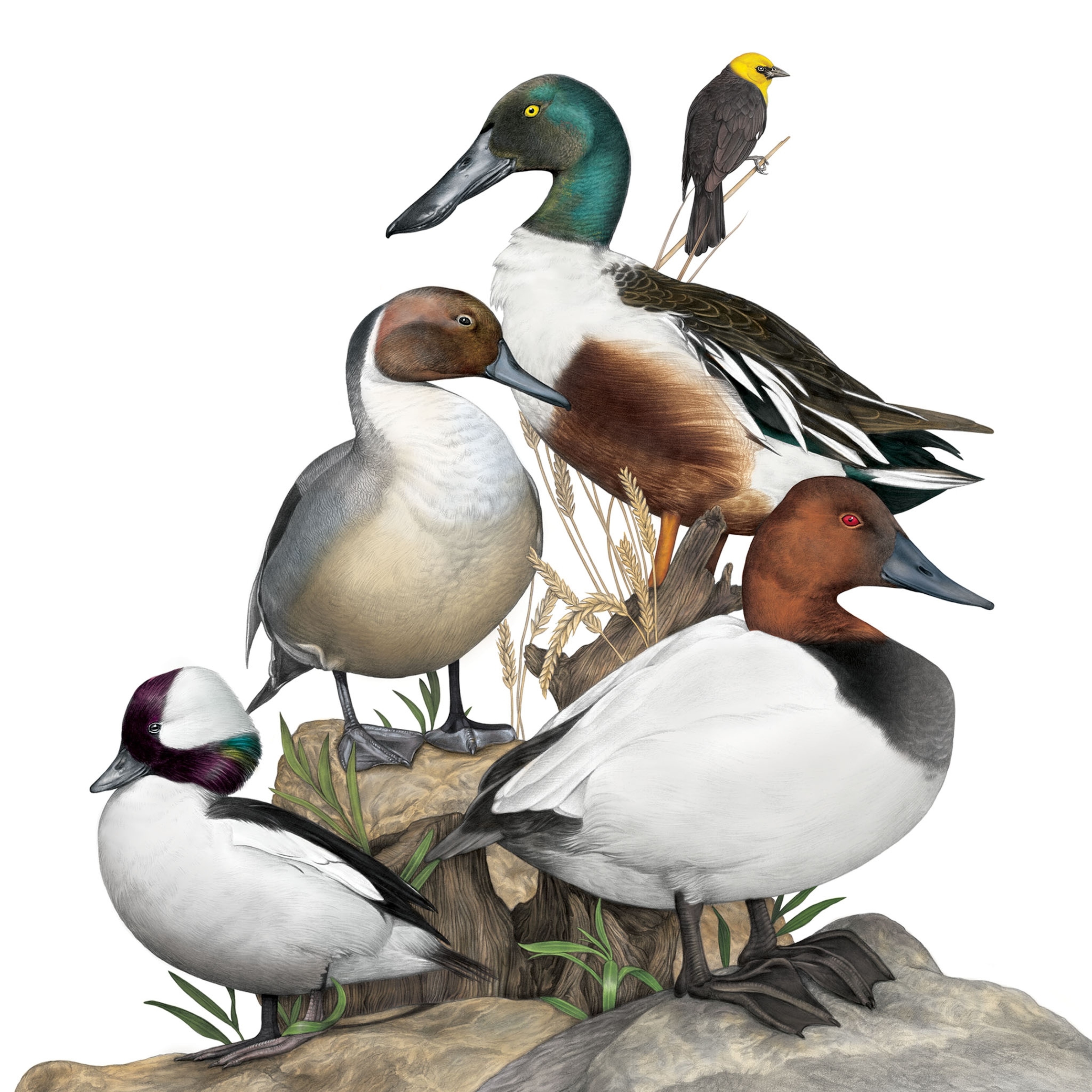
There is no single way to do conservation. Restoring ecosystems, fighting climate change, regulating hunting and fishing, eliminating pollution, helping trees beat deadly diseases, moving plants and animals to cooler habitats, killing introduced predators—all can play a role.
But the core idea is very straightforward: Plants and animals need somewhere suitable to live. Overharvesting is the main threat in the sea; on land and in freshwater, it’s habitat loss. To work, every other strategy depends on the existence of a suitable environment.
Seven days after his inauguration, President Joe Biden signed an executive order that set a goal: “conserving at least 30 percent of our lands and waters by 2030.” What counts as “conserved,” however, remains to be decided. The “30x30” proposal derives from a push to set a similar target for the entire planet, organized by the Campaign for Nature, a partnership of the Wyss Campaign for Nature and the National Geographic Society.
Conservation itself is broadly popular—a truly bipartisan issue in a deeply divided United States—but agreeing on the specifics of what will count toward the 30 percent is sure to be contentious. Allowing working lands and waters and city parks to be counted is likely to upset some conservationists. But any plan to designate almost a third of the country as strictly protected is also almost certain to alarm those who see thoughtful use as compatible with conservation—a group that includes many farmers, ranchers, fishers, hunters, and members of tribal nations eager to continue or resume traditional practices.
Large public protected areas were the backbone of America’s conservation strategy in the 20th century, and they are still important.
As it slowly rolls out its 30x30 vision, the Biden administration is sending signals that it intends to define “conserved” expansively, including efforts outside of parks and refuges. Conservation can be “something that brings us together as a country,” Secretary of the Interior Deb Haaland told me. “We have worked very hard to make sure that we’re engaging tribal communities, private landowners, folks who both make their living with the Earth, and folks who use it as a means of recreation.”
Large public protected areas were the backbone of America’s conservation strategy in the 20th century, and they are still important. The total area of parks and sanctuaries may even grow. Several new marine sanctuaries have been nominated: Chumash Heritage in California, St. George Unangan Heritage in Alaska, and Hudson Canyon in New York among them. On land, advocates for protected areas have called for new national monuments, including Castner Range in Texas; 750 square miles of meadows, mountains, and old-growth forest in Oregon’s Cascades; and Spirit Mountain—called Avi Kwa Ame by the Mojave people—in southern Nevada.
But monuments and parks are not enough. To safeguard all our species, all our ecosystems—and to make sure that they have the resources and space to adapt as the climate continues to warm—we need to do conservation everywhere. On private timberland. On farms. In cities.
Chapter One: Appalachian lace
To connect habitat with corridors so nature can adapt, conservationists are turning to working lands.
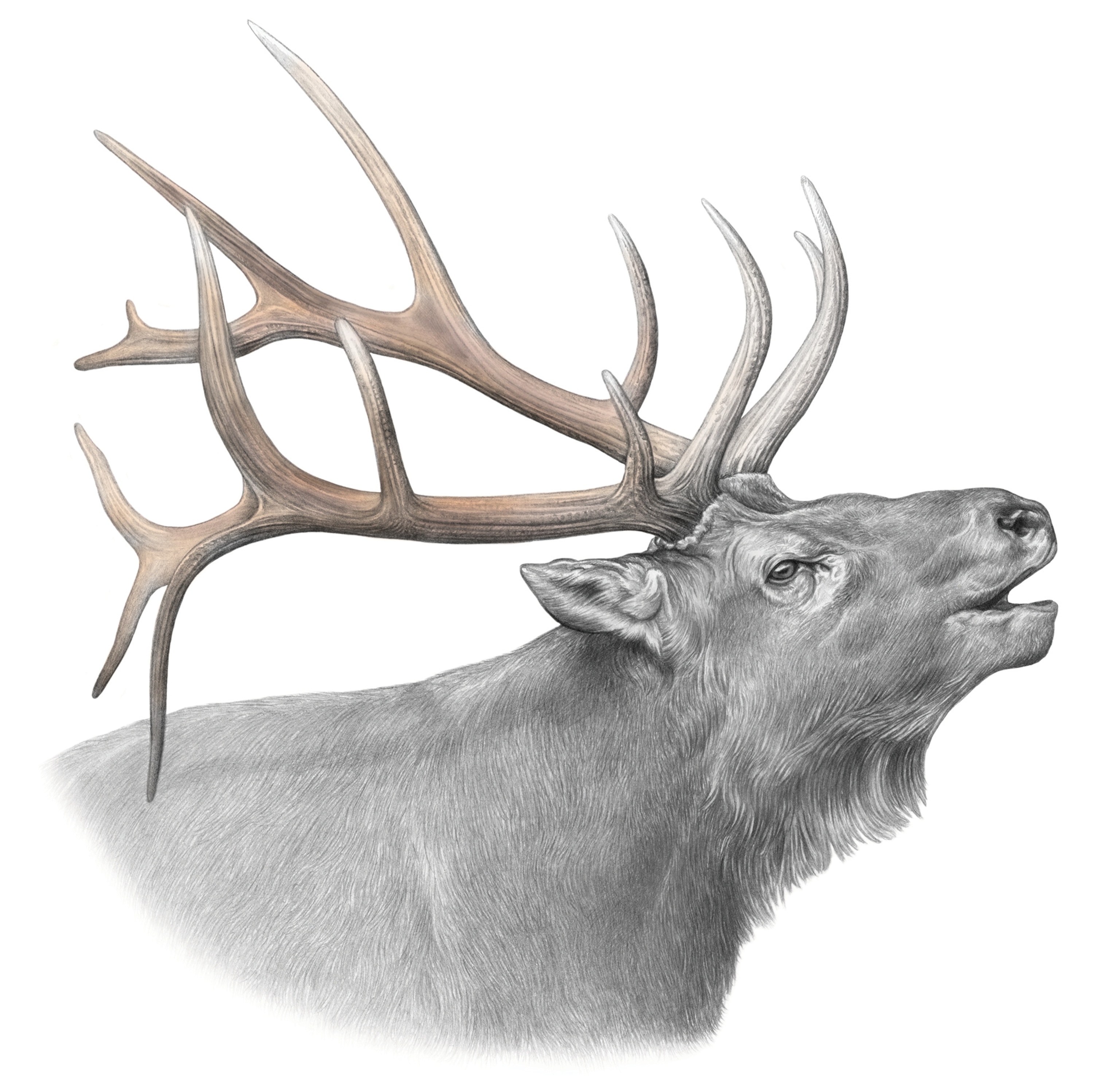
Seventy-eight percent of the protected land in the United States is in the West, but most of the vulnerable biodiversity is found “back East,” as we Westerners say. Just one river in the Appalachian Mountains, the Clinch, has 118 native species of fish—almost as many freshwater species as the entire state of California. The South is truly “a piscine rainforest,” as one scientific article puts it.
I went back East myself, wanting to see what’s being done for species like eels and elk and oysters in a landscape with fewer large national parks and preserves. I found people working to protect species in the places where people live and work, so that humans and threatened species can thrive together.
The Nature Conservancy, the world’s largest conservation nonprofit, recently arranged the acquisition of 253,000 acres of Appalachian forest, rich with freshwater habitat, for $130 million. The parcels lie in southwest Virginia and on the Kentucky-Tennessee border—an area larger than Shenandoah and Acadia National Parks combined. The property’s new owner is a limited partnership managed by the nonprofit but backed by “impact investors,” people looking to use their money to make a profit and a difference. It’s still working land.
I’ll admit I was skeptical that land could make enough money to please investors while protecting species, but I was willing to be convinced. The conservancy staff managing the project are logging some areas, leaving very large buffers around streams. They say small, strategic cuts create a diversity of habitat types and mimic natural disturbances, although critics dispute that clear-cutting can ever be considered conservation. In other areas, they’re selling the carbon credits for the trees they don’t log to companies or other institutions looking to offset their emissions. Carbon markets, too, have been criticized as a “dangerous distraction” from systemic change. In addition, the project managers are leasing the hunting and recreational rights on much of the property. And on seven former coal-mining sites, they plan to install solar farms.
I’d heard about “mountaintop removal” mining but had never seen it up close, so I ask Brad Kreps and Greg Meade, two conservancy staffers who work on the Cumberland Forest Project, to take me to the site of a proposed solar farm. On the way, we drive through hollows so steep and narrow that only one row of small, run-down houses fits along the creek. Just beyond their backyards, the Cumberland Forest property begins. Kreps points out railroad cars used to carry coal, idle for so long that kudzu vines have clambered all over them. Coal is fading. Appalachia knows it. The communities here are poor, and there’s not much work.
The solar farms will create a few jobs, though a fraction of those being lost in the coal industry. Logging supports a few more. The Nature Conservancy says ATV and hiking trails are already encouraging more tourism. The organization also intentionally structured the purchase so that the land would still be taxed. “People live in these landscapes,” says Kreps. “If we bought all this land, put a fence around it, and took it off the tax rolls, we wouldn’t have local support.”
Meade, director of the Cumberland Forest Project, nods. “The bigger you get in scale, the more you need to incorporate mixed use.” Setting aside a postage-stamp park is one thing. But conserving large areas means that you have obligations to communities that live there.
The mining on the mountaintop is finished. The accessible coal is gone, along with the mountaintop itself. What remains is a flat plain—an incongruous mesa among the pointy ridges that characterize this landscape. There’s very little to see here. Dirt, small plants, a fire ring with empty shotgun shells in it. It seems like an ideal site to install a bunch of solar panels.
If you want to do conservation everywhere, then you have to include places where people are using the land or sea to make money.
(See the most important places to conserve in America)
What this place does have is a remarkable view of ridge after ridge of forested land, receding into a misty horizon. The property is a complex set of discontinuous parcels punctured by inholdings, an Appalachian lace. But it contains a variety of latitudes, altitudes, and microclimates that offer options for the future—and enough continuity that animals can range freely. Among those animals is one long missing from these woods: elk.
Elk were hunted out of the East by the late 19th century. In the early 2010s, with considerable volunteer labor from enthusiastic hunting organizations, Virginia imported 75 elk from Kentucky—a population that itself had been seeded from those in the Rocky Mountains. Virginia officials decided to release the majestic ungulates on a flattened mountaintop—another former coal-mining site—that is now part of the Cumberland Forest property.
Leon Boyd, chairman of the Southwest Virginia Coalfields Chapter of the Rocky Mountain Elk Foundation and self-described old country boy, volunteers with the reintroduction project. Boyd shows me some antlers shed this year, fantastical objects. It astonishes me that the animals can produce a set of these anew every year. It feels like a magical power.
Boyd takes me, along with two state scientists, to see the animals in their new habitat. We drive up through trees, past coal-bed methane pumps, then pop out onto another Appalachian mesa, this one a pale green meadow. Silhouetted on the horizon is a massive bull elk, its heavy antlers ready to drop.
“Growing up in this area, we had very little wildlife to hunt or even see,” Boyd says. His father was a timber cutter and a coal miner, and Boyd himself is a well driller for the oil and gas industry. It wasn’t until his boss took him and a few other employees to New Mexico to hunt elk that he fell in love with the species, with “how they move and travel as a herd over the landscape.”
We go walking across the field, tacking to the left of a gang of elk, through a mix of plants developed by state biologists to feed elk, pollinators, and birds. It includes grasses but also wildflowers: black-eyed Susans and other coneflowers. Virginia’s elk project leader, Jackie Rosenberger, points out a slight depression in a rocky patch of ground—a killdeer nest, with four sea green, speckled eggs.
The elk aren’t far off, and I can smell them, a strong musky scent. They gaze serenely at us, their massive roan bodies held up on long, ballet-dancer legs. This population hasn’t been hunted—yet. But the goal, Rosenberger explains, is a “huntable population,” and this year will see the very first hunt, for just six bulls. Almost 32,000 people have applied. In addition, from viewing stands, tourists can see elk fight and bugle during the fall rut or tend to their calves in the spring. “We are already seeing return visitors, spending money in nearby communities,” Boyd says. “Each year it keeps getting better. That’s how we know it’s working.”
The Nature Conservancy doesn’t want to manage this land indefinitely. The plan is to set up permanent provisions that would allow public access as well as restrict development in the most ecologically valuable parts, and then sell the land and distribute the profit to the investors.
Using impact investors to protect ecosystems is just one way people have attempted to reconcile conservation with capitalism. I am sympathetic to conservationists who are skeptical that the two systems can ever really work together and believe that the pursuit of profit will always lead to overuse of natural resources. But if you want to do conservation everywhere, then you have to find a way to include places where people are using the land or sea to make money.
Meade told me the Cumberland Forest Project would never make enough money to please investors without selling credits on carbon markets. Only a total of about a thousand acres a year is logged, and much of that is in stands where the most valuable trees already have been selectively logged. “Anything marketed as pulpwood today is more valuable as carbon,” he says.
Doing conservation on working lands is much easier when there are systems that reward conservation behavior—whether that’s voluntary markets or government programs. As Wenner says, it has to pencil out. You have to make conservation pay better than destruction.
Chapter Two: Farmers to the bay
Some ecosystems are threatened by what happens upstream, so conserving them must be a watershed-wide effort.
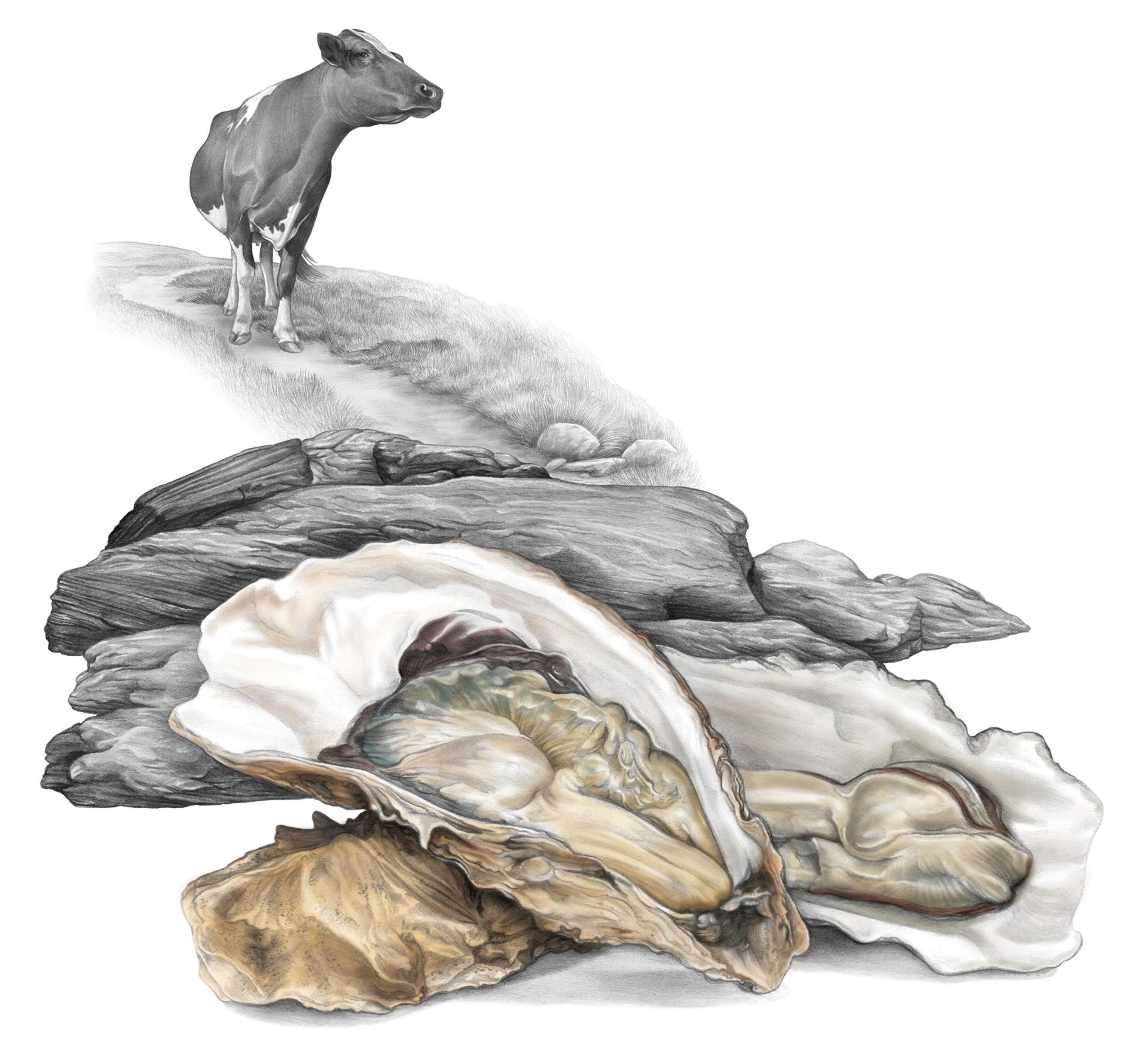
Nowhere is the need for better incentives for conservation more evident than in agriculture, where environmentally damaging practices are still lamentably common. There are 895 million acres of farmland in the United States—nearly 40 percent of the country. Many—maybe most—farmers already see themselves as stewards of the land but too often find their efforts thwarted. Market pressures, perverse regulatory incentives, and deeply entrenched ways of doing things can keep them from farming in a way that produces food without sacrificing biodiversity.
Often the biodiversity at risk isn’t even on the farms. Consider the Chesapeake Bay. Nitrogen and phosphorus from farms in a 64,000-square-mile watershed spanning six states flow into the 200-mile-long estuary. If streams are polluted, the bay will be too. And dirty, turbid water kills seagrass, which forms a habitat for other species, such as blue crab, striped bass, and white perch. Even turning the entire bay into a protected area could not save it from threats upstream. That’s why the Chesapeake Bay Foundation, started in 1967 to “Save the Bay,” as its iconic bumper stickers urge, has an office as far north as Harrisburg, Pennsylvania.
Wetland restoration would help absorb these pollutants. But there are ways to farm that reduce runoff. Crops can be planted without tilling the soil. Cover crops can hold soil in place while fields are fallow. And animals can be kept from overgrazing and trampling stream banks.
I wanted to see a farm that’s an example of what’s possible, and the foundation recommended I pay a visit to Ron Holter, a fifth-generation Maryland dairy farmer whose Holterholm Farms is one of many such small operations west of Baltimore. In the spring of 1995, after an agricultural extension class and “a lot of prayer,” Holter moved his cattle—which he had fed mostly in barns—outside. He divided the land, which he had plowed to grow grain to feed the cows, into 68 three-acre paddocks. The cattle are moved daily, so each paddock is grazed for less than a week a year. This allows the grass to rest, giving the roots a chance to grow deep and strong, which prevents erosion. Cow manure is all the fertilizer the pasture needs. It certainly looks bucolic, with a herd of Jerseys lounging in an undulating pasture of fescue, chicory, and white clover.
In the old days after a rain, he recalls, water ran through his field, red with soil. When he switched to what he calls “holistic planned grazing,” the water turned clear. Then, as his pasture grew deep, tangled roots and its microbial soil community thrived, the water stopped flowing altogether. His land now holds three times the water it once did.
Holter plunges in a shovel so I can inspect the soil. “Bacteria form microbial glue,” he explains proudly, as I run my fingers through the moist, caramel-colored dirt, which is indeed gluey—and fragrant. “We’ve increased soil organic matter to 6 percent from 3 percent,” Holter says. His pasture is literally twice as alive as it used to be.
Smarter investment could empower farmers to be environmental leaders. They deserve to be well paid for preserving America.
Farmers like Holter take a leap into the unknown when they switch to grazing systems like this, often called rotational grazing. The Chesapeake Bay Foundation tries to make it easier, providing funding, advice, and connections to programs that defray some costs. Holter has applied for federal funds to upgrade his system for bringing water to his small pastures. He no longer buys seed corn or fertilizer. He doesn’t need to plow, sow, or harvest, so he rarely uses his tractor. He’s also able to sell his organic, grass-fed milk for more because consumers will pay more. But it still takes guts. Holter lost farming friends when he made the switch.
It’s worth noting that while rotational grazing can address the impacts of cattle on watersheds, grass-fed cows still belch methane, a powerful greenhouse gas. One study suggested those emissions could be canceled out by carbon sequestered in permanent pasture. But other researchers maintain that the ideal future might be one where humans drink less milk and eat less beef.
In 2021, farmers, ranchers, and forest landowners received more than $3.3 billion through U.S. Department of Agriculture conservation programs, covering more than 108 million acres. Those are big numbers, but more can be done. Programs that incentivize harmful practices—grants for waste lagoons at confined animal feeding operations, for example—could be phased out. Smarter investment in conservation for farms and forests could truly empower farmers to be environmental leaders. These men and women deserve to be well paid for preserving the places that make America beautiful.
The Chesapeake Bay Foundation doesn’t just advise and support farmers; it also tries to inspire them by bringing them to the bay itself. “If you don’t know it, you don’t love it,” says Matt Kowalski, a restoration scientist. “If you don’t love it, you won’t try to protect it.”
And so I find myself on an aluminum workboat bobbing above an oyster reef in Chesapeake Bay, surrounded by half a dozen farmers wearing Wrangler jeans and muck boots. We’ve talked about inputs to the bay from farms. And now we’re talking about cleaning the water on the other end. Chris Moore, an ecosystem scientist with the foundation, is explaining why he and his colleagues have been supporting oyster restoration. Turns out the scrumptious shellfish are also fantastic filters, each cleaning as much as 50 gallons of water a day. “Oysters work better than an aquarium filter from PetSmart,” he says. There used to be so many oysters in the bay that they could filter the entire volume in a week, consuming nitrogen and phosphorus from runoff and ejecting the excess as pellets that settle to the bottom. But in the 1980s, disease and continuous trawling destroyed reefs up to 15 feet high constructed over thousands of years.
Moore and the other foundation staff pull up a handful of clustered oysters. The farmers gingerly handle the wet, spiky agglomerations. One empty shell has a vivid red beard sponge growing on it. Another shell has a mud crab tucked inside, which decides to pinch me. “When I see the worms coming up from the soil, I know that I’ve got good soil,” says Jenni Hoover, a farmer from Mount Airy, Maryland. “And so seeing the crabs, the little baby crabs, over with the oysters is a really positive sign.”
The Chesapeake Oyster Alliance, a group of nonprofits, community organizations, and oyster growers and harvesters, is promoting aquaculture in floating boxes and seeding baby oysters on artificial reefs of discarded shells or concrete. The goal is 10 billion oysters. These reefs can also protect coastal communities from more intense storm surges. It’s climate change adaptation you can eat with a squeeze of lemon.
Together, Moore explains, farmers and oyster growers can, in fact, “Save the Bay.” Someone shucks a four-inch oyster to show the group. Demonstration over, the oyster is up for grabs. No one volunteers, so I seize the opportunity and gleefully eat it myself. I jot down a few tasting notes: “marine, mossy, terrestrial, rich soil.”
Chapter Three: A creek in Yonkers
City nature is both an amenity for urbanites and valuable habitat for some species.
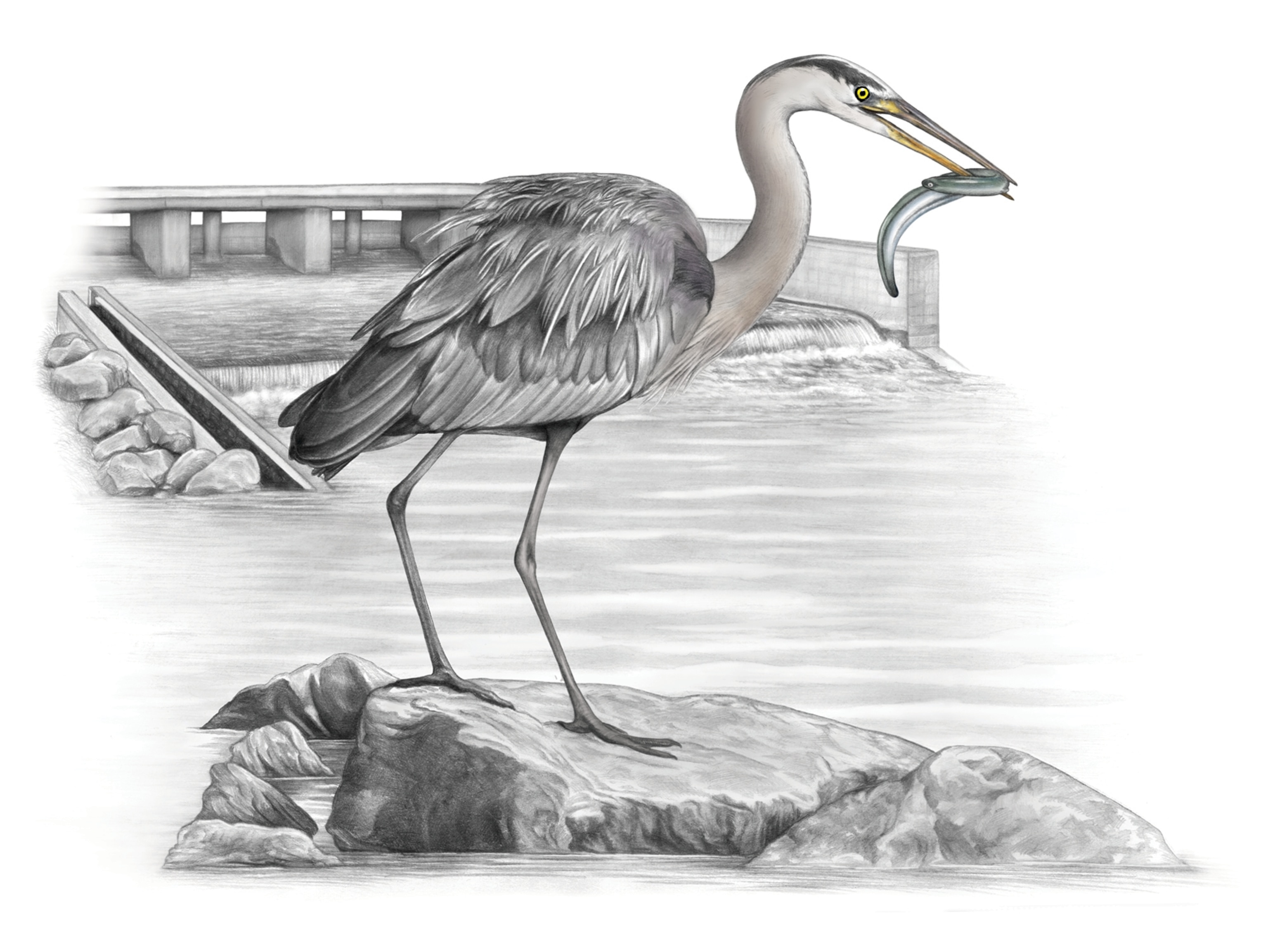
Even more than farms, cities may seem like the opposite of “nature.” They are places for people—lots of people.If you want big protected areas, then encouraging people to live in dense cities makes sense. We can cluster like oysters, sparing land for other species. And we can live more lightly, using public transit and heating and cooling apartments instead of houses.
But pushing urban density to the limit would squeeze out parks, gardens, and other green spaces—places that clean the air, shade and cool, and encourage us to exercise. Research indicates the presence of other species makes us happy. The late naturalist E.O. Wilson suggested that the effect, which he called “biophilia,” was biological. We evolved with plants and other animals, and we need them to feel psychologically whole.
I’ve been nurtured by city parks my whole life; they are where I learned to value other species, starting with crows and cedars. My friend Roy Tsao, who teaches political theory and philosophy at Pratt Institute in Brooklyn, says taking up birding later in life has made him a happier man. “It has completely changed the way I feel about living in New York City,” he says. “It makes you aware of the seasons. In late March there are woodcocks in Midtown.”
Urban green space—from rooftop gardens to pocket parks to the linear forests of street trees—isn’t just about making us feel good, though. Real conservation can occur in these spaces—especially for birds, plants, insects, and other small wildlife. A naturalist studying the Gottlieb Native Garden, a single acre in Beverly Hills, California, documented over 1,400 species in the past five years, from cougars and ospreys to varieties of bark lice previously unknown to science.
Greenways and urban streams can be corridors through the concrete for plants and wildlife. Sometimes cities can even be refuges. New York City’s Central Park is famous among birders because it’s a haven for birds migrating up and down the East Coast. Grassland birds such as dickcissels and Savannah sparrows are more likely to see their eggs hatch and chicks fledge in urban areas around Chicago than in rural Illinois. Peregrine falcons, endangered in North America until they were saved by breeding and reintroduction, actually thrive better in cities than in the countryside, because there are so many pigeons and other birds for them to eat.
Nothing illustrates the promise of urban conservation more poetically than “daylighting” a creek. It’s easy to forget that all cities were built on ecosystems, and many had rivers and creeks running through them. As cities grew, these waterways were typically confined to pipes or culverts. In Yonkers, an unofficial “sixth borough” just north of New York City, Saw Mill River, which once powered mills to cut timber and grind grain into flour, gradually turned into a polluted mess. In the 1920s the last 2,000 feet was covered with a parking lot. But since 2012, 800 feet of that section has run through a landscaped channel, sparkling in the sun in a new 2.2-acre park. More recently, other sections, deeper downtown, have been uncovered.
Peregrine falcons, endangered until they were saved by breeding and reintroduction, actually thrive better in cities than in the countryside.
I take a train from Manhattan to Yonkers to see it. The creek turns out to be visible from the platform. Just outside the station, I am met by Brigitte Griswold and Candida Rodriguez of Groundwork Hudson Valley, one of the many organizations that helped unbury the creek. We cross the street and take in the satisfying sight—and sound—of a burbling river in the center of downtown. We see a fish ladder, installed for the sea-born eel babies—called “glass eels” because they are completely transparent—to climb upstream to grow big.
This project, initiated by community leaders more than 20 years ago, is a hard-won and expensive reality, involving the state, the city of Yonkers, Groundwork, Scenic Hudson, and the U.S. Fish and Wildlife Service. That first 800 feet cost $24 million. But Yonkers mayor Mike Spano says the project has been “a major catalyst for the renaissance of downtown Yonkers and the city as a whole,” adding that it inspired more than four billion dollars in redevelopment, including 3,000 apartments. “Green gentrification” can be an ironic consequence of urban conservation, but Yonkers has required some units to be low-income housing.
After native plants were installed along the new channel, wildlife appeared as if by magic. Muskrat, herons, turtles, and ducks are spotted here regularly. Another section hosts a hydroelectric wheel that powers nearby streetlights. In a streamside park, two men are whiling away the afternoon. “I like the water. I like the ducks,” one tells us, appreciatively.
Griswold once worked on more traditional conservation projects, but she wanted to do something that connected people to the nonhuman world—in part so they would come to care for it enough to fight for it. That meant doing it in the city. Not everyone can afford to visit flagship national parks, she says.
Rodriguez shows me areas on a Yonkers map that were redlined—set aside for nonwhite residents, spurned by lenders. They have fewer trees and more concrete. Access to nature is not evenly distributed.
Fixing that injustice may be the best way to create a generation that cares enough about other species to save them.
Rodriguez says the daylighted creek offers a place for people to unwind, creates a buzzy location for businesses, and protects threatened species like eels. “A triple win,” she calls it. Griswold sums it up: “There’s a beautiful thing in downtown Yonkers, and it belongs to all of us.”
Epilogue: Growing relationships
Instead of walling ourselves out, we need to learn to live well with other species.
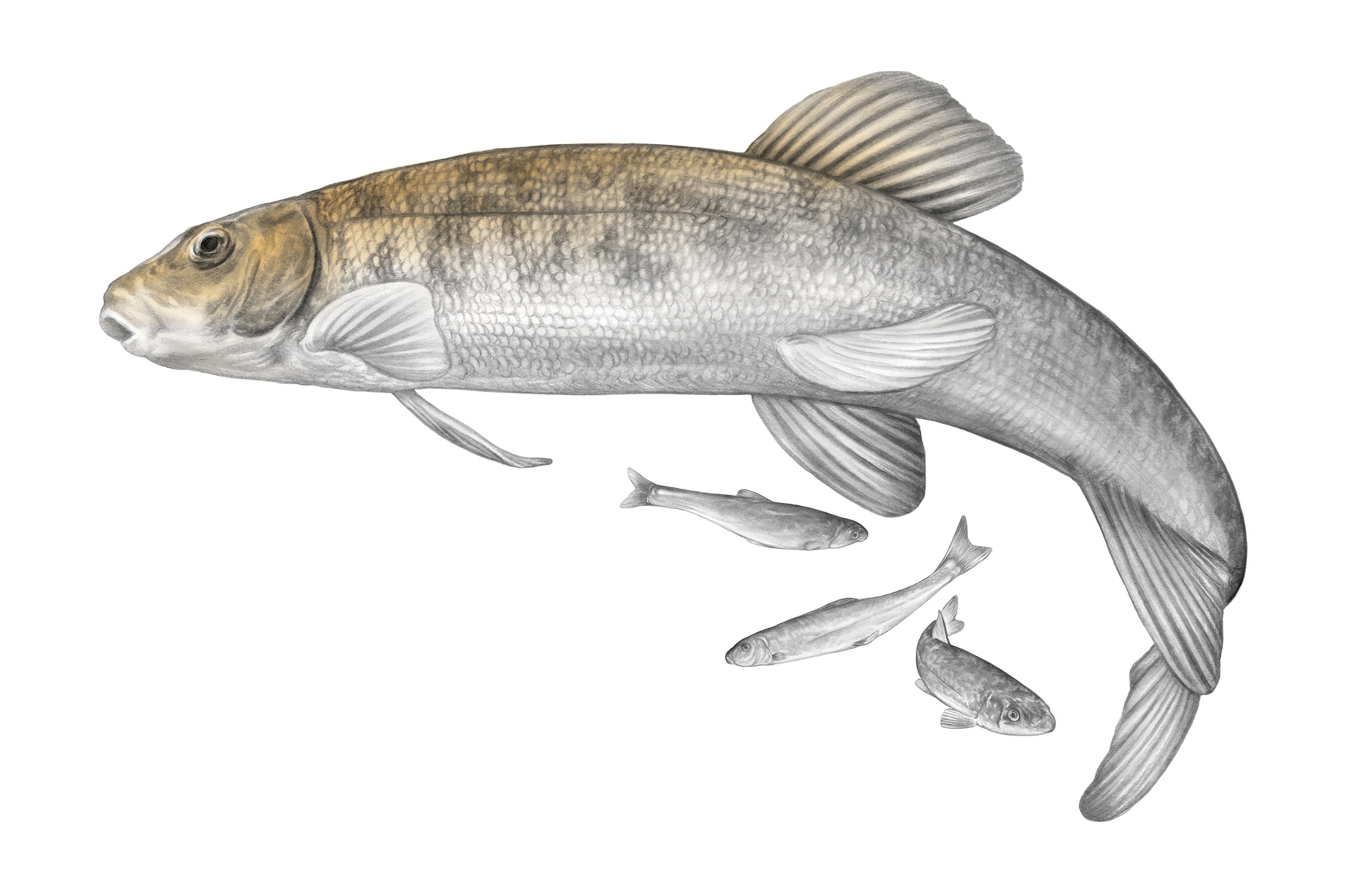
Back home in the Klamath Basin, I think about water—how it is both beautiful and essential to life. Much of our area is in what the National Weather Service terms an “extreme drought.” The Lower Klamath National Wildlife Refuge is normally a stopover for half of the Pacific flyway’s migrating waterfowl.
It relies on water managed by the U.S. Bureau of Reclamation and gets whatever’s left after farmers take their share. These days, there’s nothing left. The refuge turns to dust. Irrigation also draws down water from Upper Klamath Lake, which can limit access to areas where suckers spawn.
One solution would be to use less water for farming. That’s anathema to many farmers, but it may be necessary to support bird migration, save the suckers, and send enough clear, cold water down the Klamath River to keep endangered Chinook and coho salmon alive.
Don Gentry, until recently the Klamath Tribal Council chairman, is very worried about the c’waam and the koptu, as the suckers are called in the Klamath language. Before colonization, these fish were crucial for the tribe’s survival when winter food stocks ran low. Every spring, the fish are honored and blessed by tribal elders in a ceremony. They are a deeply significant cultural food, but because of their decline, tribal members haven’t harvested them since 1986.
“I am really concerned about losing our koptu,” Gentry says, citing the more gravely endangered species. “When I go along the lake, and I look at the mountains with their snow, I just think about how beautiful our homeland is,” he says, but his thoughts always turn to the fish. “It doesn’t take long to go there. I can’t wake up in the morning and not think about this.”
The tribe is working to recover the suckers, running a hatchery to preserve the genetic diversity of the species and researching the conditions they need to thrive. This spring, the tribe sued the federal government for sending water to farmers at a time when lake levels were lower than the minimums called for in the government’s own report on the species’ needs. Gentry believes that the basin has “a certain resilience and productivity,” which should allow it to support agriculture as well as waterfowl and suckers. But he says sharing the water, especially as climate change worsens and leads to longer droughts, will require cooperation. That isn’t happening yet—in part because of ideological divisions rooted in colonialism.
Conservation needs to be about protecting other species with people. It’s about improving our relationships with the nonhuman world.
The model of conservation centered on parks and other strictly protected areas is sometimes called fortress conservation, and it too can be traced to colonialism. It has been increasingly criticized for setting as its goal a wilderness devoid of humans, a fantasy that never really existed. In what is now the United States, humans were already present as the glaciers from the last ice age were retreating, meaning that our ecosystems all developed with humans in them.
Many grasslands, wetlands, and forests were shaped for millennia by people through periodic burning. And many species were carefully tended, including oaks in California; clams in the Northwest; Four Corners potato, goosefoot, wolfberry, and sumac in the Southwest; and chestnuts in the East. The Klamath people managed 10,000 acres of a wetland lily called wocus, whose seeds produce excellent flour. Today wocus is hard to find around Upper Klamath Lake. Sometimes, removing people hurts other species.
Reviving Indigenous management techniques—such as prescribed fire, clam gardens, and traditional fishing practices—is all the rage in conservation. Like conservation in timberlands, farms, and cities, tribal management is about simultaneously meeting the needs of people and of other species. It’s about flourishing together. Conservationists are realizing their work isn’t about protecting other species from people—although limiting access or harvests can at times be necessary. Instead, conservation needs to be about protecting other species with people. It is about improving our relationships with the nonhuman world, not severing them.
(In this episode of our podcast Overheard, hear how photographer Stephen Wilkes captured some of America's most beautiful—and changing—natural treasures. Listen now on Apple Podcasts.)
On a cold spring afternoon, a truck hauling a 600-gallon tank arrives at Wenner’s farm. Inside are 1,712 baby c’waam and koptu from a federal hatchery. It’s time to put this human-made wetland to work as a nursery for endangered fish.
Wenner, as is his nature, is in an ebullient mood. Despite the drought and tensions over scarce water, he’s optimistic about the future. He’s seen how fast wetland species returned to his farm when he invited them back. “Immediately, this fall, we had 10,000 ducks and geese on these 70 acres.” With more cash and help for landowners to navigate the red tape, he thinks the Klamath Basin could be a case study for landscape-scale conservation. The question, he says, is “whether we can look at the big picture and get everyone pulling in the same direction. It is not happening yet.” But, he adds, “if we can do it here, we can do it anywhere.”
Tree swallows catch midges above our heads, and blackbirds call over the white noise of traffic on the nearby highway. A U.S. Fish and Wildlife biologist opens a valve on the tank, and a cascade of water and fish rushes into a waiting net. Baby suckers are about four inches long, dark olive on their backs, silver on their bellies. Wenner carries the first net to his marsh. The moment the little fish hit the water, they disappear, perfectly camouflaged. In a few weeks, another batch will arrive, this one from the tribal hatchery. Wenner is a barley farmer and a fish farmer now. “How do you feel, Karl?” I shout out, like a sports reporter interviewing a winning quarterback. “I feel good!” He shouts back. “I feel good.”
As the scientists work, one fish sloshes out of the net, landing in the muddy road. Without thinking, I reach down and pick it up. Feeling its muscular body wriggle in my hands, I run to the water and let it go. It flashes silver, rights itself, and swims off into the future.
This story appears in the September 2022 issue of National Geographic magazine.

